One of my readers has been waiting through episode after episode of curries just for this one recipe and finally couldn’t wait any longer, so she sent me a message on my Facebook page asking for it, saying that she’s been waiting nearly a year now. Ha! I wish I knew earlier. This recipe is something I wasn’t even planning on writing about.
By the way, for all my followers, if you want any specific Thai recipes, you can request them. If I don’t have any recipes already planned, I should be able to post the recipe you request within a week or two. If I already have requests in the queue, then you might have to wait a little longer, but at least you will get it sooner than a year!
This is my husband’s all time favorite dish that I make all the time at home, but I never knew that it was quite so popular among the non-Thais. It is an ancient recipe, but has been altered over time until it no longer resembles the original.
The Prik Khing known to the Thais and foreigners these days is the dish using Kaeng Kua curry paste, stir-fried in oil with long beans or green beans and your choice of meat. In Thailand, the choice of meat is usually pork belly, crispy pork fat or crispy fried catfish fluff (made by steaming or grilling the catfish, separating the meat, fluffing it, then deep-frying it in hot oil; the fish meat fluffs even more in the process), but outside the country it could be chicken, beef, shrimp or many other possibilities.
Prik Khing is also spelled multiple ways. Thai write พริกขิง only one way, but in karaoke Thai, using the Roman alphabet, there are several. Prik Khing, the one I use, seems to be the most popular name. There is also Prik King (yikes), Phrik King and Phrik Khing, the least bawdy. Some would call it Pad Phrik Khing or Phat Prik Khing. Pad (Phat) means stir fry. Remember these stir-fried favorites?”Pad” Thai, Khao “Pad” Sapparot, (Pineapple fried rice), “Pad”See Ew, and “Pad”Kee Mao.
In the history of the dish, it was used as rations for people who had to travel a long distances, including solders, or it was made to stockpile. You might wonder WHY. Because stir-frying the meat (crispy pork fat or pork belly were the most popular choices because they can be kept unspoiled for a long time) in oil and curry paste until they are dry not only prevents the food from spoiling in a hot climate, but is also tasty, and I don’t have to explain that it’s easy to transport.
So, originally Prik Khing was quite dry and had no vegetables. When did the beans come in to the picture? Prik Khing was normally eaten with vegetables anyway, just to tame the heat from the chili down a little bit. And sometimes in the rations cooked long beans were added to the Prik Khing just to make it easier to eat.
A lot of Thai people debate about the name of this dish. As you might already know, Prik in Thai means chilli, but how about Khing? Khing is ginger. “Does it contain ginger?” is the most common question among the Thai cooks. (Wikipedia doesn’t have the correct information about the curry paste on this, so ignore it.)
The ancient recipe that I know does contain ginger, a lot of ginger. Ginger has many medicinal effects: immune boosting, anti-inflammatory, eliminating gastrointestinal distress and especially preventing nausea and the symptoms of motion sickness, which was the most important property of ginger. You might ask why this was so essential. How were travelers in the olden days getting motion sickness?
When the American pioneers still traveled in wagons, I hope you didn’t expect that my ancestors were flying around on a magic bamboo mat, do you? We walked, of course, but otherwise we rode in wagons, or on the backs of water buffalos, horses or elephants. You think it was fun to wobble on those animals’ backs or in a wagon that had wooden wheels? Not to mention the roads weren’t exactly Autobahn smooth! If there was any path resemble a road way, we’re already considered lucky. Ginger was an essential remedy for traveling back in those days. I’m sure that’s why they put a lot of ginger in the Prik Khing that was used as rations. Smart move! Pioneers would have probably killed for some ginger.
Prik Khing with crispy pork was the common stockpile in the Thai household. In the old time we used homemade lard. We would cook pork fat until it released the oil. The by-product from this process is crispy pork fat, similar to bacon but no salty taste because we never cure the pork fat. To get enough oil to use in the household for the whole week, my grandmother have to fry at least 2 lb. of pork fat a week.
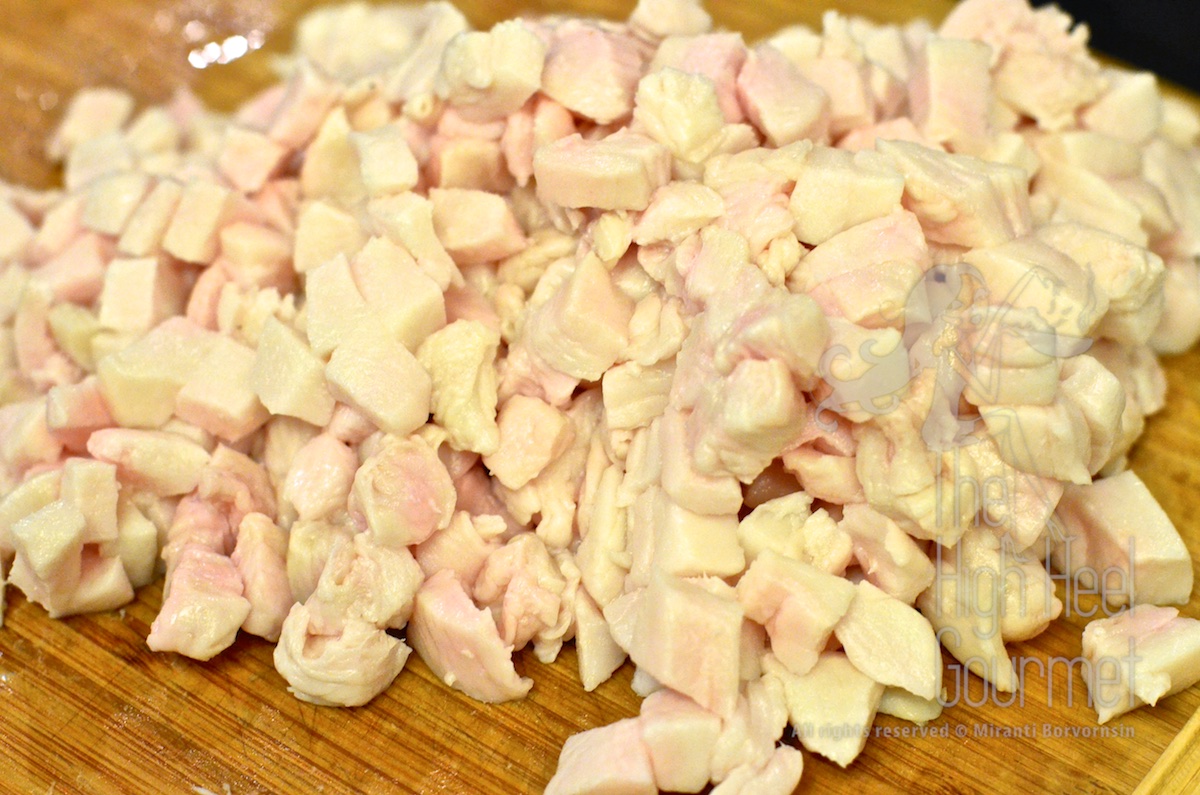
I swear I didn’t really cut these out from my belly or my thighs, even though they kinda look familiar.
The crispy pork was actually a treasure in the cupboard. If I could get to it before anyone else, especially my dad who normally was the fastest, I would just eat it plain or put it over steamed rice, add a dash of fish sauce, some slices of shallot, and squeeze a little lime juice over. Just that, and I was in heaven. I would sit down on the kitchen floor, spread my legs apart and put my rice bowl in between, just to protect and guard my food. I savored every bite of it. Good thing I did, because as a grown up with high-cholesterol genetics, I have to think three times before I eat it!
The problem with the crispy pork fat, called “Gaag Moo”, is about a kilo of pork fat yield so little crispy pork fat, approximately about 3/4 cup. So, we don’t normally make Prik Khing as a weekly thing but if we have some party going on that we need a lot of lard, then of course, we got a lot more crispy pork fat and that’s the Prik Khing time.
Once we get the crispy pork fat we leave it to cool while we’re pounding on the curry paste. We use Kaeng Kua curry paste, omitting the kaffir lime peel but adding lots of ginger, approximately about the same amount as the curry paste used for the dish. Then we add the dried shrimp into the curry paste too. The curry paste will be cooked in oil, either lard that was extracted from the crispy pork fat (not recommended for people with heart problems or high cholesterol) or vegetable oil.
When the curry paste is cooked and fragrant, then the other ingredients will be added. I use the Songkhla (a province in the south of Thailand) recipe that was handed down in my family, so we add not only the crispy pork fat but also the same amount of crushed peanuts with it too. The Prik Khing will be seasoned with fish sauce and palm sugar. Stir-fry until all the ingredients are well blended. That’s the ancient recipe of Prik Khing.
You probably don’t care about that ancient recipe, developed before the discovery of cholesterol and heart plaque. The modern Prik Khing is much healthier, with green beans and shrimp.
Ingredients (for 2 or for my husband these are ALL for him. I would be lucky to get a few bites.)
Green beans or long bean cut about 1”-1.5” long 2 cups
Kaeng Kua curry paste 3 tablespoons
Shrimp, or your choice of meat cut to pieces 1/2 cup (Vegetarian or Vegan use cubed hard tofu)
Fish sauce 2 tablespoons (Vegetarian or Vegan use mushroom soy sauce)
Palm sugar 1 tablespoon
Vegetable oil 2-3 tablespoons
(Optional) Ginger 3 tablespoons
(Optional) Dried shrimps 2-3 tablespoons
(Optional) Chiffonaded kaffir lime leaves
Method
1) If you want to use ginger, mince or pound it in the mortar with the curry paste before you start. Same for the dried shrimp.
2) Put oil in the wok over medium heat. Add curry paste to the oil and stir fry for at least 1 minute, or until fragrant. (You should sneeze at least once if you just made the curry paste fresh)
**If you are using chicken, pork, beef or lamb, please see note #1**
3) Increase the heat to high, add the cut green beans and stir-fry, season with fish sauce and palm sugar, taste and adjust to your preference. Stir-fry the green beans until they’re almost cooked.
4) Add the shrimp and toss them around quickly until they’re all cooked. The green beans should be cooked through, too.
5) Serve with steamed jasmine rice.
NOTE
1) If you are using other land animal meat, add the meat right after you cook the curry paste, and stir-fry until the outsides are cooked before adding green beans.
Another friend just asked me for the ancient Songkhla-style Prik Khing recipe after I posted the picture on Facebook page. So here we go:
Ingredients for Songkhla-style Prik Khing
Crispy pork fat (กากหมู) 3/4 – 1 cup — You can get this from frying about a kg or (2 lb.) of pork fat
Dried shrimp 1/2 cup
Kaeng Kua curry paste 3 tablespoons
Ginger 3 tablespoons
Crushed peanuts 3/4 – 1 cup
Oil 1/4 cup
Fish sauce 2-4 tablespoons
Palm sugar 2-3 tablespoons
(Optional) Salted duck egg
(Optional) Chiffonaded kaffir lime leaves
Method
1) Mince ginger or pound it in the mortar with the curry paste before you start. Same with the dried shrimp.
2) Put oil in the wok over medium heat. Add curry paste to the oil and stir fry for at least 1 minute, or until it fragrant.
3) Lower the heat to medium-low, add crushed peanuts and season with fish sauce and palm sugar. Taste and adjust the taste.
4) If you want to add salted duck egg or chiffonade kaffir lime leave, this is the time to add it, and you might want to taste it again because the salted egg could change the balance.
5) Add crispy pork fat and toss until everything are well blended quickly then turn off the heat.
6) Served with boiled rice or steamed rice and a lot of vegetables.

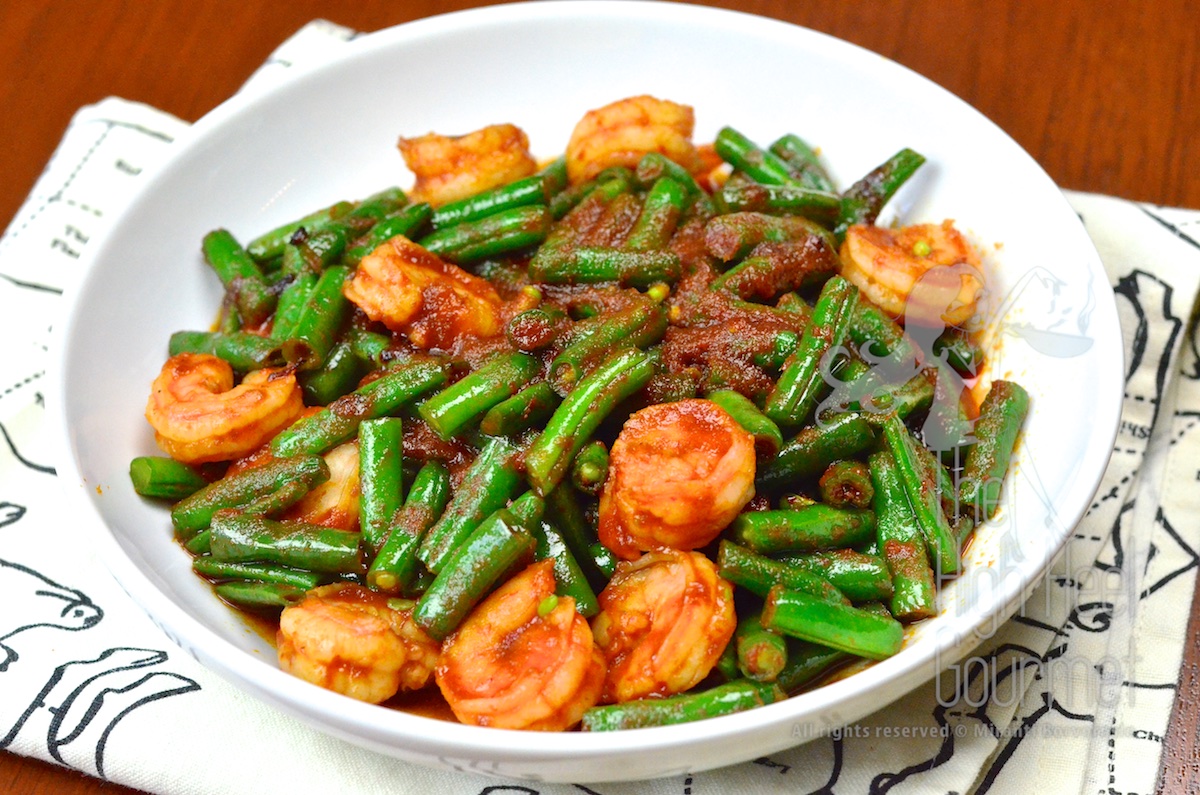
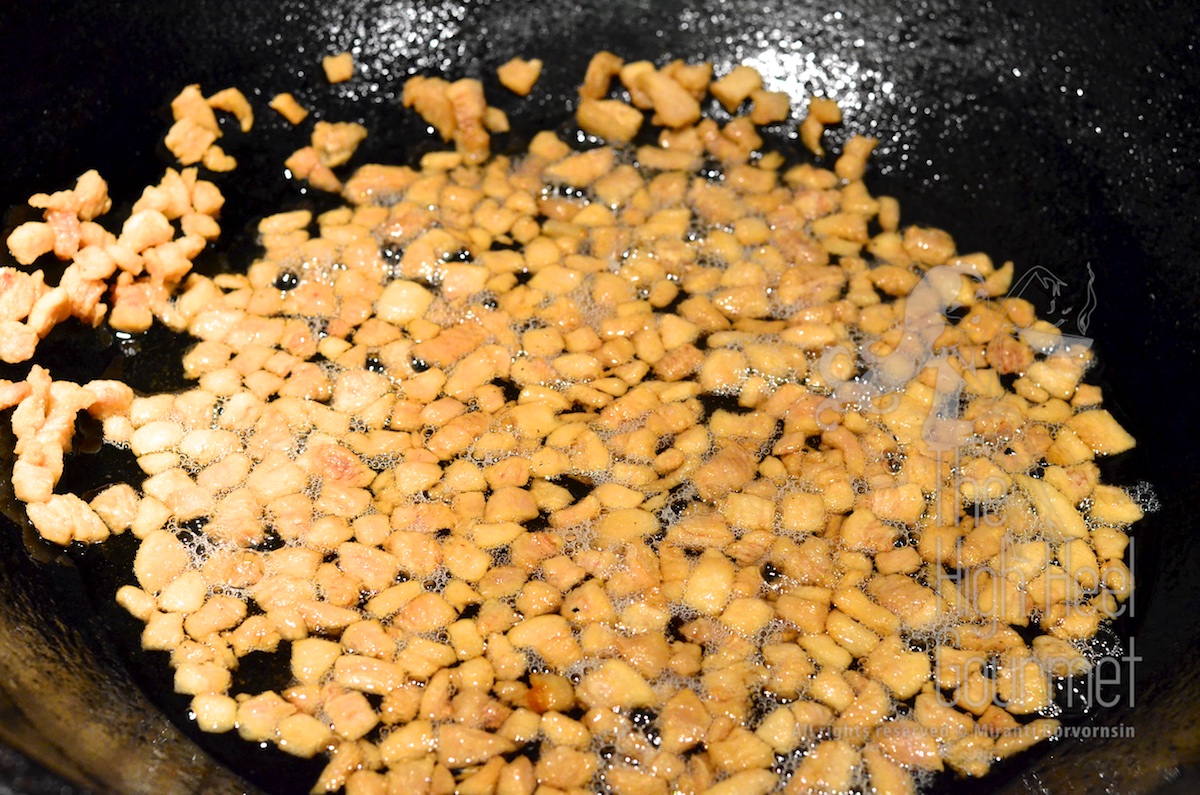
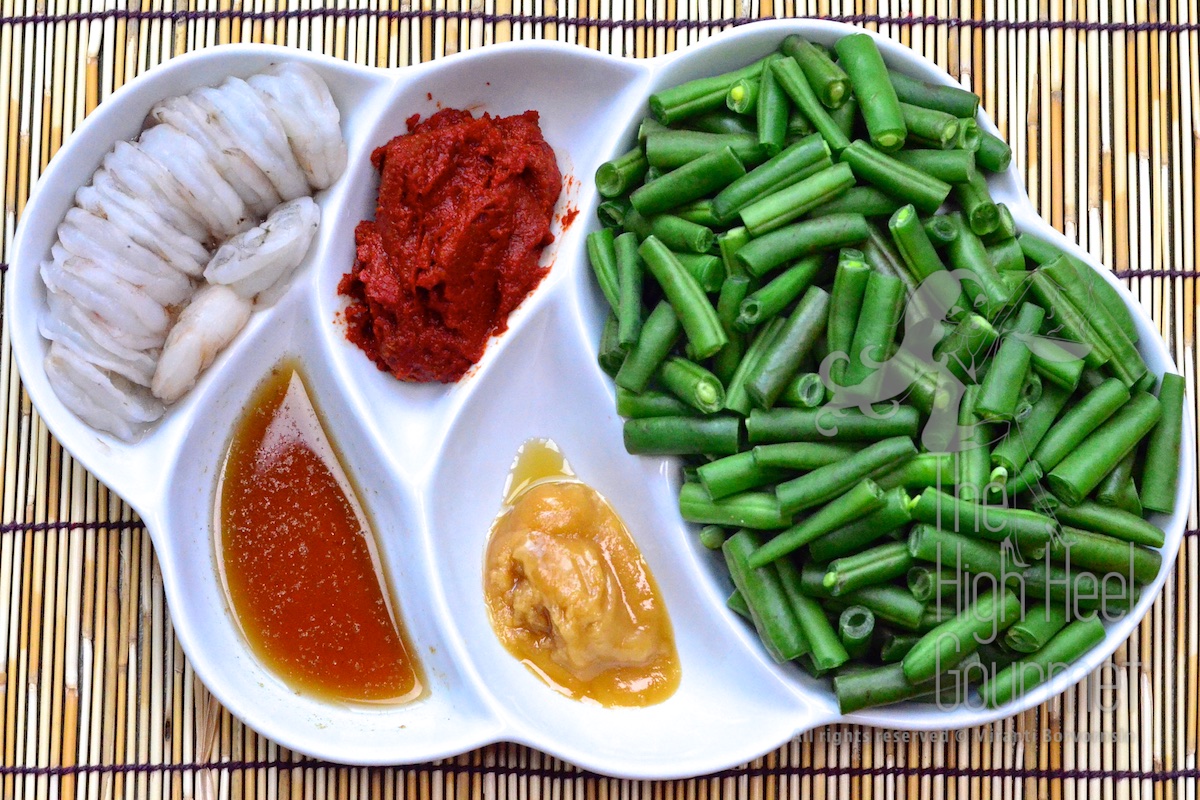
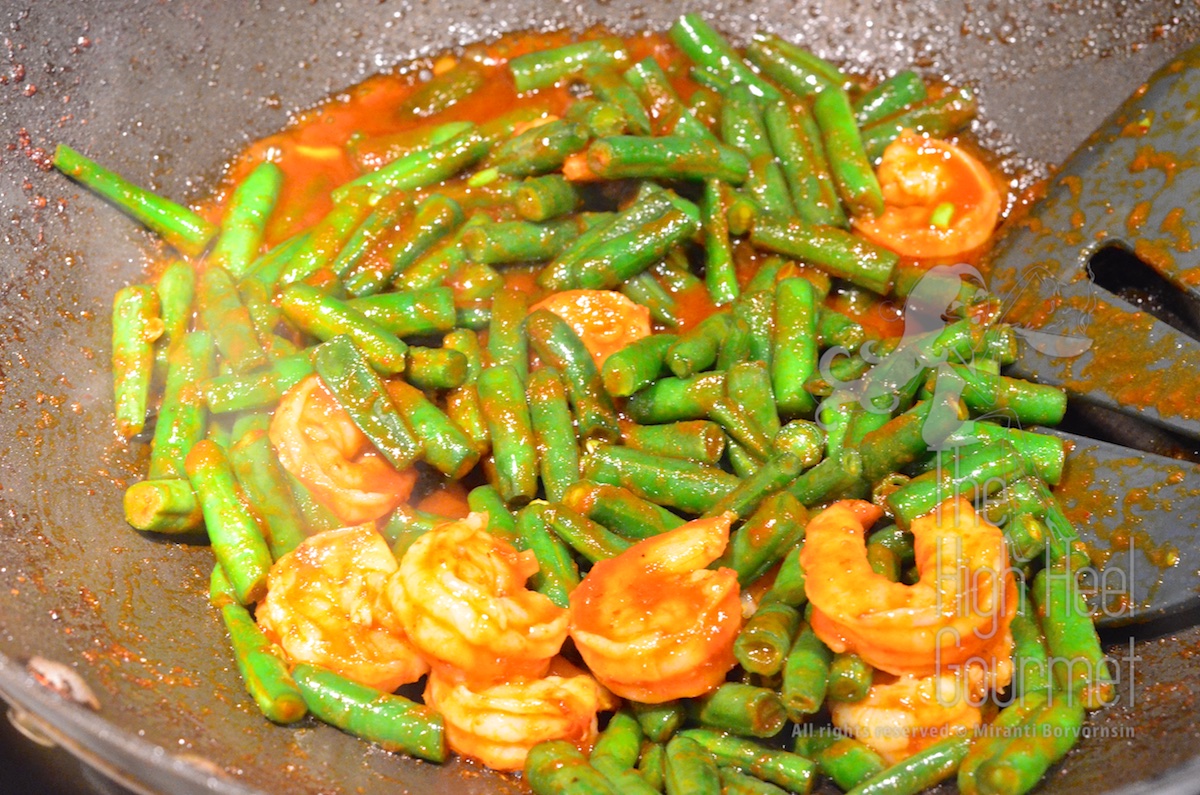
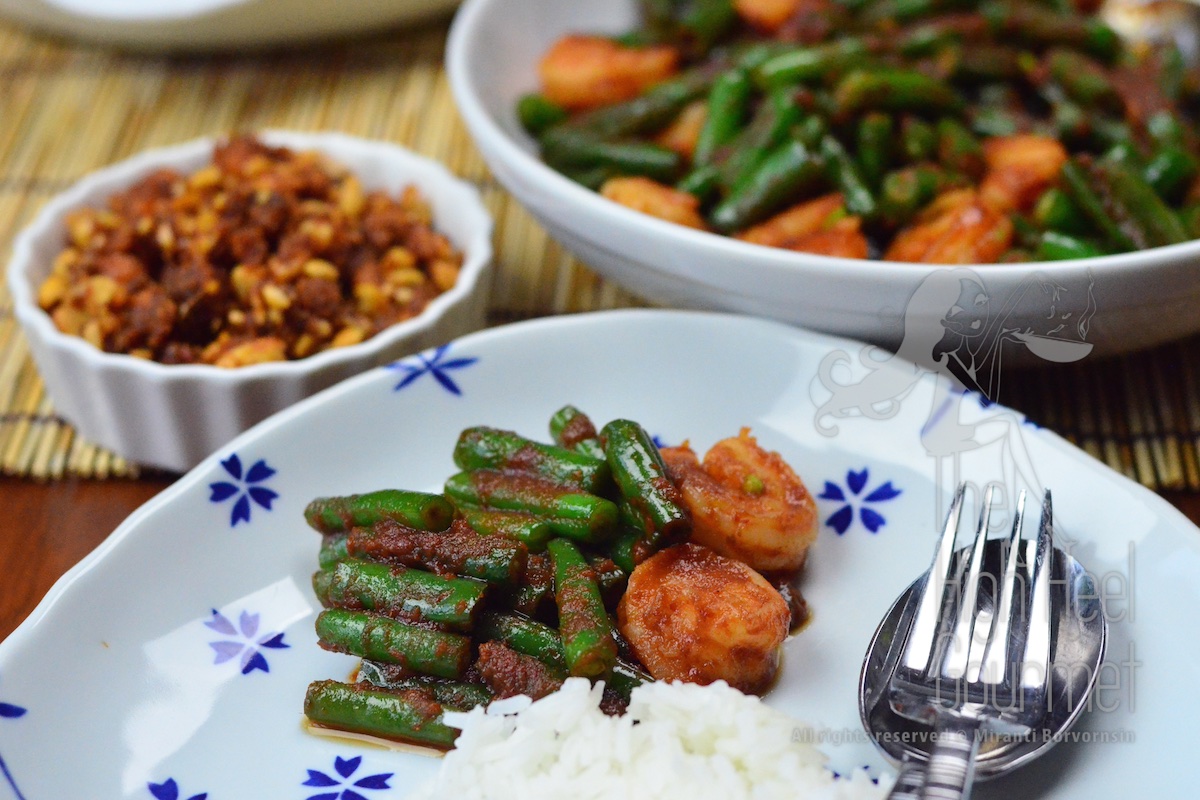
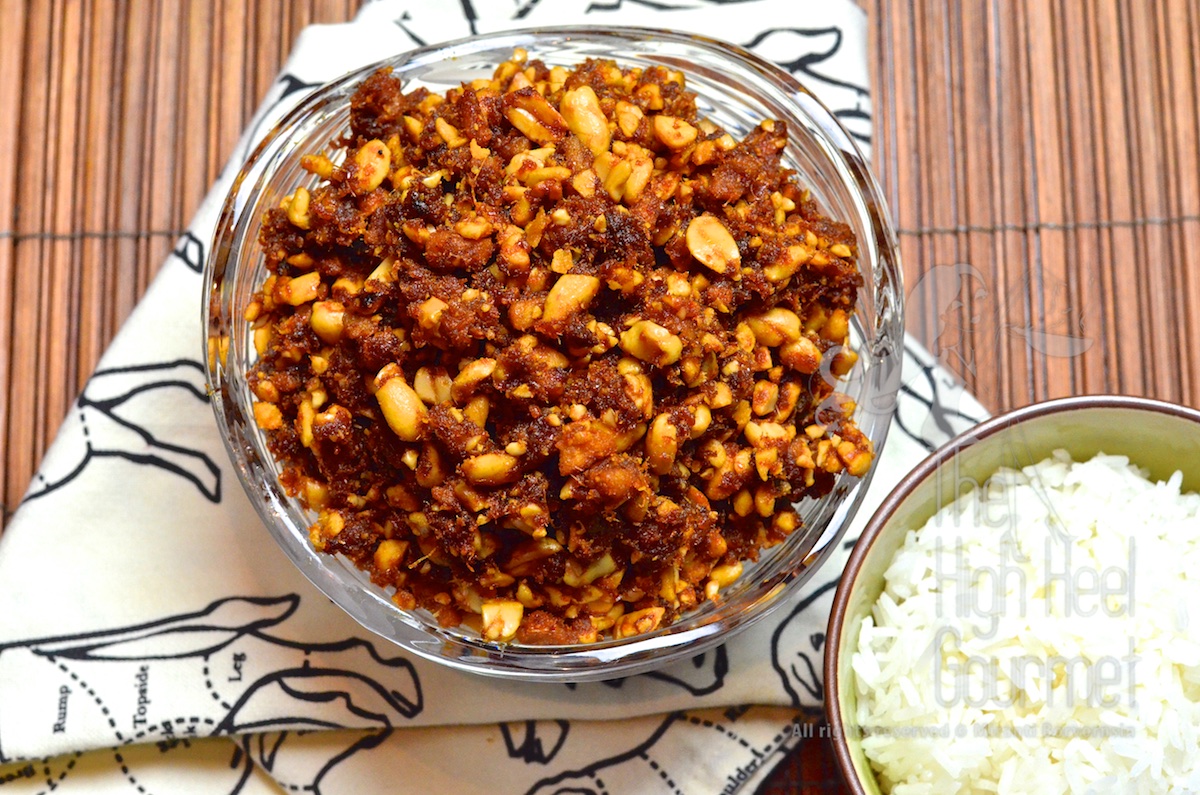
I love this dish ,l think the many love it.Thank you so much for the recipe.Best regards.to you and your husband .jalal
I’m glad 🙂 Thank you!
I love this dish too! But my favourite part of this post is your description of eating the fried pork fat with rice. I remember doing that, and it was also one of my favourites!! Isn’t the texture fabulous, crispy on the outside, a tiny bit spongy soft on the inside, and all that porky fattiness! Also try to eat less lard these days, since I work in an office and don’t get much exercise, but this post really brought back those memories, thanks so much!! 😀
Wow…you are the one that make my mouth watered by describing the texture of the pork fat just exactly how they were. I also LOVE the smell of pork fat while cooking the lard too…When When When When…the medical research would come out and say, butter and lard are essential to our body and every one SHOULD eat that at least once or twice a week?
What an interesting history the dish has! Thanks for sharing.
Both interesting and delicious!
Made this a couple of times now. Easy and delicious! Thanks, Miranti. https://stefangourmet.wordpress.com/2014/10/27/shrimp-and-green-beans-with-thai-red-curry-paste-pad-prik-khing-goong/
Reblogged this on The ObamaCrat™.
One of my favorite Thai dishes! Thanks for the recipe! 🙂
you are so good !! i really look forward to your posts !!
I just love your images; they always make me hungry.
Once again…..amazing! dru
Reblogged this on Sassi Italy Tours and commented:
I love THHG’s recipes; for those needing a deviation from Mediterranean cuisine for a night, read her blog.
I’m finally back home and can have home-cooked meals again. Home-cooked ASIAN meals! This looks delicious. I love me some prawns!
Welcome back 🙂 Yay, you get to cook in your kitchen again. (Not that I think you had a bad time during your trip) Did you still had the Aussie chocolate left?
Some of the exploded can was left, but dad brought two cans, so we still have another can =)
This looks absolutely amazing and Mouthwatering! Plus an interesting history as well 🙂
Thanks 🙂
Thank you, thank you for this DELISH recipe.
I was wanting to eat Green Beans & Shrimps and saw your recipe… Sent husband off to get the fish sauce and made it for lunch (after doing a lot of gardening ) no time at all, it was quick, tasty & easy !!!
I thoroughly enjoyed reading about the history, grandma etc. too !!
Good work keep the recipes comjng.
Thai food lover,
🙂